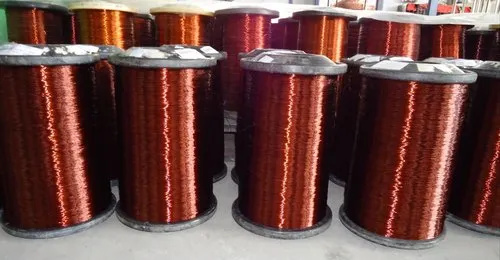How to Design Custom Coils Using Magnet Wire?
2024-01-11
Designing custom coils using magnet wire involves several steps. Here's a general guide to help you get started:
Determine your coil requirements: Define the specifications of the coil you want to design. Consider parameters such as wire gauge, number of turns, coil diameter, and desired inductance or resistance.
Select the magnet wire: Magnet wire, also known as winding wire, is a copper wire coated with a thin layer of insulation. Choose a magnet wire that meets your requirements in terms of gauge (wire diameter) and insulation type. The gauge affects the wire's current-carrying capacity and resistance, while the insulation type determines its heat resistance and electrical properties.
Calculate the coil parameters: Use formulas or software tools to calculate the necessary parameters for your coil design. For example, you can use formulas to determine the number of turns required to achieve a specific inductance or resistance, or to calculate the wire length needed for a given coil diameter.
Design the coil shape: Determine the shape and dimensions of your coil. This could be a simple cylindrical shape or a more complex geometry depending on your application. Consider factors such as space constraints and magnetic field requirements.
Wind the wire: Carefully wind the magnet wire around a mandrel or coil form following the desired coil shape. Ensure that the wire is wound tightly and evenly, with each turn touching the adjacent turn.
Secure the ends: Once the desired number of turns is achieved, secure the ends of the wire to prevent unwinding. You can use tape, adhesive, or a small amount of varnish to hold the wire in place.
Test and measure: After completing the coil, test its electrical properties using appropriate equipment. Measure the inductance, resistance, and other relevant parameters to ensure they meet your design specifications.
Protect and insulate: Apply a suitable insulation layer over the completed coil to protect it from environmental factors and prevent short circuits. This could involve applying additional layers of insulation tape, varnish, or encapsulating the coil in a protective material.
Remember, designing custom coils requires knowledge of electrical engineering principles and calculations. It's important to consult relevant resources, such as coil design guides or seek expert assistance if you're new to coil winding or require precise specifications for your application.
